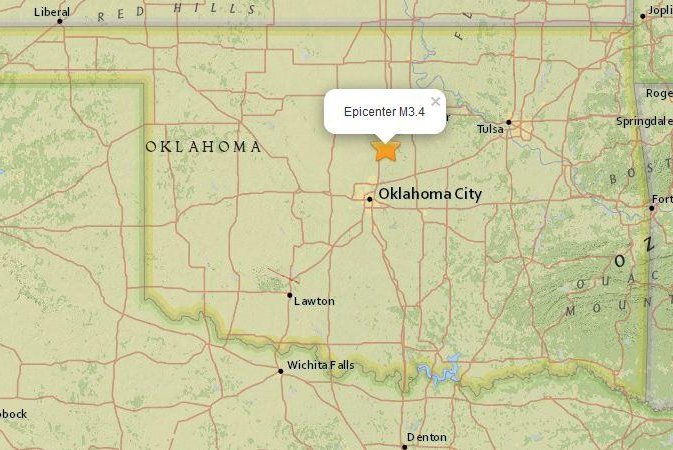Oklahoma expands efforts to reduce wastewater injection from oil and gas operators in an effort to curb seismic activity in the state. A magnitude-3.4 tremor recorded early Tuesday. Map courtesy of the U.S. Geological Survey.
OKLAHOMA CITY, March 8 (UPI) -- The Oklahoma state government announced it expanded plans to curb wastewater injection volumes to lower the risk of seismic activity in oil and gas basins.
The U.S. Geological Survey recorded three minor earthquakes in Oklahoma in the last 24 hours, including a magnitude-3.4 quake in the central part of the state early Tuesday morning local time. A report last year from the USGS found the disposal of wastewater from the oil and gas industry may be behind the increase in seismic activity in Oklahoma since 2009.
In January, Gov. Mary Fallin approved $1.38 million in one-time costs to support earthquake research to be directed by the Oklahoma Corporation Commission and the Oklahoma Geological Survey. Expanding on further plans, the state agency said it was increasing the size of the risk area in central Oklahoma.
Tim Baker, a director at the agency, said a survey area in central Oklahoma will cover more than 5,000 square miles and include more than 400 disposal wells. The action is similar in size and scope to plans outlined for western Oklahoma in early February.
"This means a reduction of more than 300,000 barrels a day from the 2015 average injection volumes," Baker said in a statement.
Plans for the central part of the state will be implemented over the course of two months, though the first phase was scheduled this week.
"It is important to note that researchers agree that any decrease in earthquakes that may result from such plans is rarely immediate, and must be evaluated over the course of several months," the agency said.
According to federal data, Oklahoma oil reserves represent just over 3 percent of total U.S. supply.















